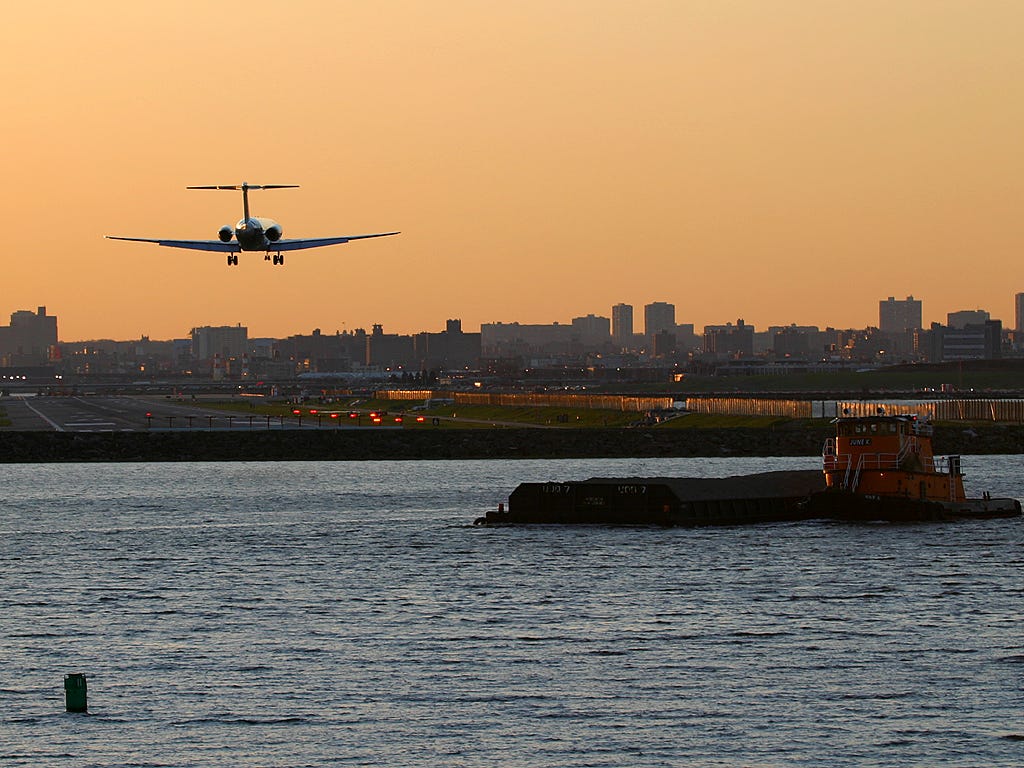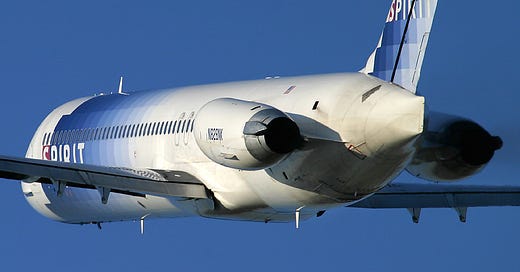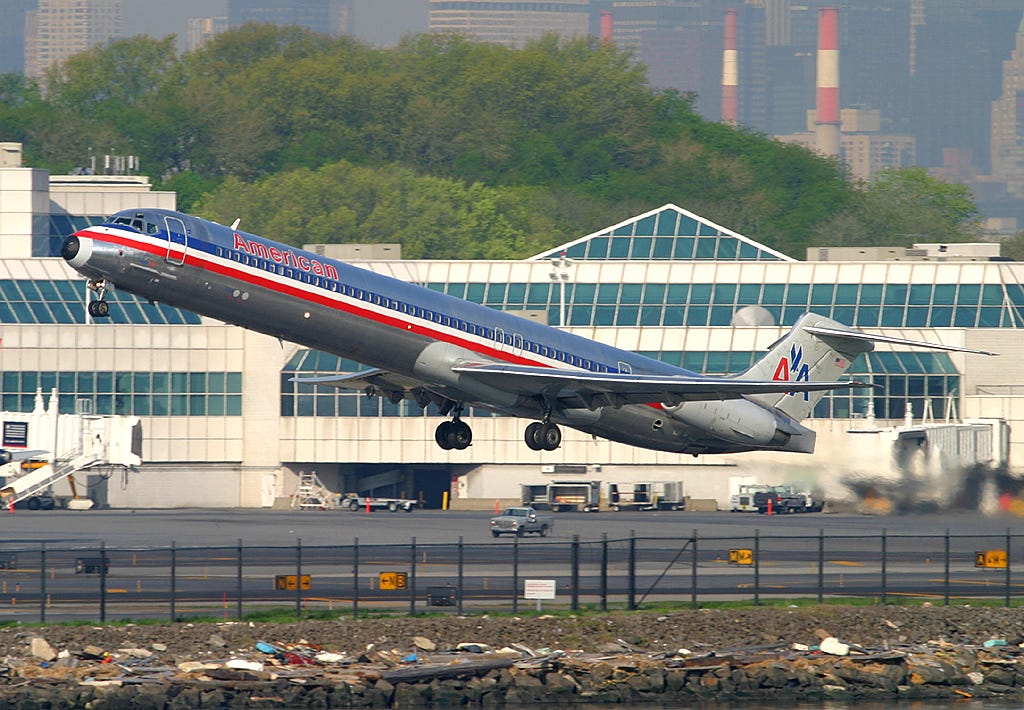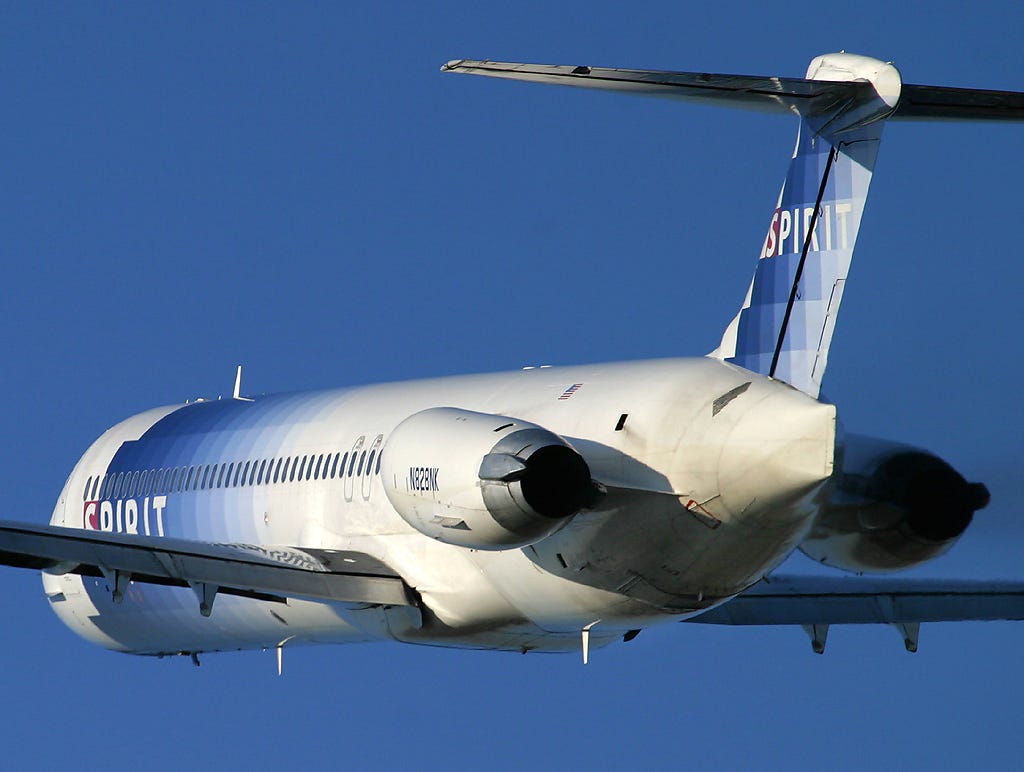Right Over My House, With No Engines (Or So I Thought)
That time I thought my MD-80 was going to crash-land into my own neighborhood.
The seed of my aviation career was planted when I was a little boy, looking out from the third-floor window of our apartment in the College Point section of Queens, where I could watch all the aircraft activity across Flushing Bay at LaGuardia Airport. My questions about aviation, my interest in safety, and my love for watching heavy metal defy gravity all started with that view.
My years of watching from that side of the water would also lead me to a moment of sudden confusion, fear, and a pretty humbling realization.
Through the Years
The lineup of aircraft types at LaGuardia has changed drastically over the decades. In the 1980s, there was a lot of variety, and a lot of noise. Even though you’d see unique oddballs like BAC One-Elevens, Fokker jets and Fokker props, the crown jewels were the widebodies. The stigma of LGA as having “short runways,” and a central terminal that built for mid-size aircraft, always made it a thrill to see DC-10s and L-1011s coming and going.
In the 1990s, the big bird tri-jets started to disappear, but another “three-holer” workhorse was ready to take their place: the Boeing 727. Carriers like American, Northwest, United, Delta, USAir, TWA, and others flew them daily.

The economic downturn after the September 11th attacks caused another big shift in aircraft usage. Airlines dumped the aging, fuel-chugging 727s, quickly. The title of LGA’s workhorse was passed to the McDonnell Douglas MD-80. Very active fleets from American, Delta, Spirit, and some from Midwest kept multiple -80s in sight at any given moment on LGA’s ramp.
In Like a Lion, Out Like a Mad Dog
Though the 727 and the MD-80 (nicknamed “Mad Dog”) both used JT8D engines, the MD-80 only had two of them, and those versions were just a tad quieter. That being said, they were still quite loud. When Delta retired its last MD-80 in June 2020, it marked the end of an era: no more scheduled U.S. airline flights using those skinny, loud “cigar” engines. That era began on October 26, 1958, when Pan Am launched transatlantic service from JFK to Paris using Boeing 707s.
I don’t know how many thousands of MD-80 flights I’ve heard taking off from my home right across the water from the airport, but I loved it. It was the ambient soundtrack of my teens and early adulthood.
Inside Looking Out
Though I had flown as a passenger on MD-80s several times, working in aviation gave me access to a new place to enjoy them: the cockpit jump seat.
SIDE NOTE: For those unfamiliar, jumpseating is a privilege in the airline industry for certain roles, offering a chance to fly on their own airline, or others, free of charge. Some roles (such as pilots or dispatchers) have access to flight deck jump seats, while flight attendants, for example, are able to use the cabin jump seats.
I had been jumpseating for years already, aboard so many types of aircraft over several continents, but my first ride on an MD-80 was a memorable one, and possibly the biggest fright I’ve ever had on an airplane.
Reverse Angle Planespotting
I loved jumpseating out of LaGuardia because, aside from being fun on its own, it gave me a unique perspective of my hometown.
One day, I walked into Terminal D and found the gate of Delta Air Lines’ next flight out to Atlanta, which is pretty much hourly. I presented my credentials, which they ran through the appropriate security checks, and I was issued a boarding pass for seat “1W.” I then headed into the flight deck.
After the usual handshakes, a briefing from a pilot, and slapping on my headset, I sat back to hear that we would be using runway 13 for takeoff. This meant we would be passing my house! A “reverse angle” view from inside the cockpit of what I’ve seen a million times: an MD-80 roaring into the skies over Flushing, Queens.
What Just Happened?!
I’m a Dispatcher by trade, and though not a pilot, we are well-trained to know our way around a flight deck and its systems. While I can’t say I’d be able to fly an MD-80 (an Airbus A320 for sure, though), I know everything happening up front. Well…almost everything.
As we taxied out, I followed along as the pilots ran their checklists, talked to ATC, and eventually turned onto runway 13 and advanced the throttles. Rolling down the runway, I imagined a younger me sitting on that one giant rock on the shoreline across the bay, watching this Mad Dog slowly and loudly climb into the sky.
“V1…rotate,” said the First Officer, as the Captain gently pulled back on the yoke, lifting the nose toward the sky. I looked over to my left and could see College Point, my hometown, and I loved having this vantage point from such a unique experience.
I was still looking to the left as the Captain said “Gear up,” to which the FO lifted the gear lever, followed by the sounds of the nosegear right below us being absorbed up and into the fuselage as the gear doors closed with a thud.
Then, absolute silence. Like, nothing.
Thinking Fast
I jerked my head forward, wondering if I was really not hearing what I thought I wasn’t hearing. Still silence. Did we just lose both engines?!
So much happened in my head in the next second. Where can we come down? Southbound Grand Central Parkway (it wouldn’t be the first)? Flushing Meadows Park? We don’t have much altitude to turn and probably not enough time to re-light an engine.
Obviously, there’s nothing I could do. I was just along for the ride at this point. I looked at the gauges: N1…EGT…N2… none showed anything that would indicate this sudden loss of power we are clearly experiencing.
Worse, the pilots aren’t even reacting! The First Officer just mumbled something about switching to departure frequency. Um, guys?
Thankfully, I put it together. I’m so used to the experiences from the jump seats of 757s, 767s, and A320s, and it turns out the louder engines on this aircraft have a unique feature.
The Mad Dog Whisperer
MD-80’s engines are mounted on the sides of the fuselage at the very back of the 148-foot-long aircraft, unlike more common airliners today with wing-mounted engines that are therefore closer to the front and exposed to their direct noise path. The tucked-in engines mean that we also have over two dozen rows of seats insulating the cockpit from that sound path.
This leads to two things. First, the MD-80, though louder, had a quieter flight deck than most other airliners from its time. Second, the engines were just fine, and I’m an idiot.
Besides, “Miracle on the Sludge of Flushing Creek” doesn’t have a very good ring to it anyway.

If you have a question about aviation, my career, or a story request, please email me at phildernerjr@gmail.com.
Disclaimer: The views expressed in this article are solely my own and do not represent the positions of my employer or any affiliated organizations. This content is for informational purposes only and is not intended as professional advice.





That was fun! I did get to sit in First Class a few times on MD-80 flights and they were pretty quiet from there as well. And I do recall one unfortunate time I was in the very last row and that is very definitely not quiet at all.
Very evocative! Like you, I was fascinated with aircraft from an early age. The 'observation' deck at the old Albuquerque Sunport terminal was a wonderful place to watch private, commercial, and military aircraft land and taxi. The lobby area of the upgraded airport had a marvelous painting by Wilson Hurley, a former military pilot ... I think the National Air and Space Museum also has one of his paintings.